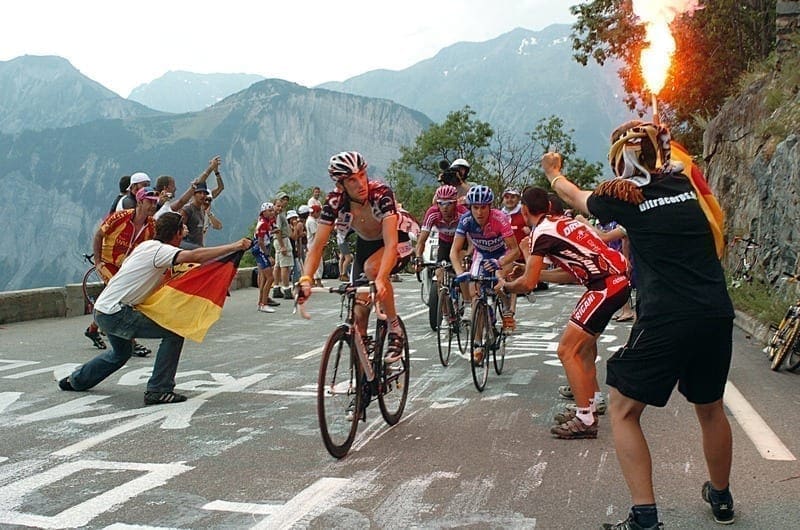Believe or not, the Tour de France began as an almost flat race. The routes for the first two editions were plotted to make the grueling distances bearable for the riders by avoiding steep inclines. It soon became clear, however, that these flat routes were far too easy and did not challenge the riders or entertain the crowds enough.
The first mountain stages
As a result, the race organizers sent out surveyors to track down suitable mountain stages. The Ballon d’Alsace was the first climb to be added to the race in 1905. Later, in 1910, Alphonse Steinès, the assistant of race founder, Henri Desgrange, was sent to assess the slopes of the Col du Tourmalet. The snow was so deep he had to travel the last section on foot and got lost. He then fell down a ravine and had to be rescued by the police. Despite this, he declared the route practical for cycling. It was added to the tour along with three other peaks in the Pyrenees: the Peyresourde, Aspin and Aubisque, to form part of a 326-kilometre mountain stage known as the “Circle of Death.” For many, the addition of the mountains marked the true beginning of the Tour.
The Circle of Death is born
When 1910 winner Octave Lapize was forced to dismount and push his bike on his first-ever climb up the Tourmalet, he later accused the organizers of being murderers. This is thought to be where the grim nickname for the stage originated. Today, the competitors still approach these climbs with fear and trepidation, despite having superior equipment and team support as well as kinder road surfaces under their wheels. They also cover less distance and ride fewer days overall.
Lapize may have pushed his bike up the Tourmalet but the second man to climb it that day, Gustave Garrigou, managed to ride to the summit. Despite the cries of cruelty from Lapize, he crossed the finish line in Paris 10 days later as the overall winner having covered 4,737 km over 31 days.
Spanish excursion
The Circle of Death last featured in the 2018 Tour de France when Geraint Thomas rode to victory. Thomas could return for another shot in 2020 alongside 2019 winner and teammate Egan Bernal. The Col du Tourmalet also features in the Vuelta de España Grand Tour from time to time. The peak has been included on stage 6 of the 2020 schedule where 2019 winner Primož Roglic is likely to return as the bookies favourite to defend his crown – you can check the latest odds on all the Grand Tour races at Suomibetting.
Over 100 years of pain
In those early days, the riders had to carry out repairs by themselves even if it meant borrowing the equipment of a village blacksmith to forge repairs to their forks and frames. There were no mechanics on standby and spare bikes were out of the question. This was a far cry from today when riders can switch bikes or change parts in seconds without losing too much ground. Back then, stopping for a simple repair could cost a rider an entire Grand Tour.
By the 1950s, riders had teams carrying their spares in a car. On one famous occasion, Spanish climbing specialist, Federico Bahamontes, rode to the top of the Col du Tourmalet with a broken spoke. His team car got stuck behind the bunch so he bought himself an ice cream to eat at the top while he waited until his bike could be repaired. He became known as the ‘ice-cream rider,’ a nickname he was not fond of.
It may sound like today’s athletes have it easier but a quick look at the faces of those who arrive at these summits suggests otherwise – the amount of effort and preparation is just as grueling. Every rider from the first mountain climb in 1905 to the most recent has pushed themselves to the limit of their ability.
Image: Pixabay
No products found.
















